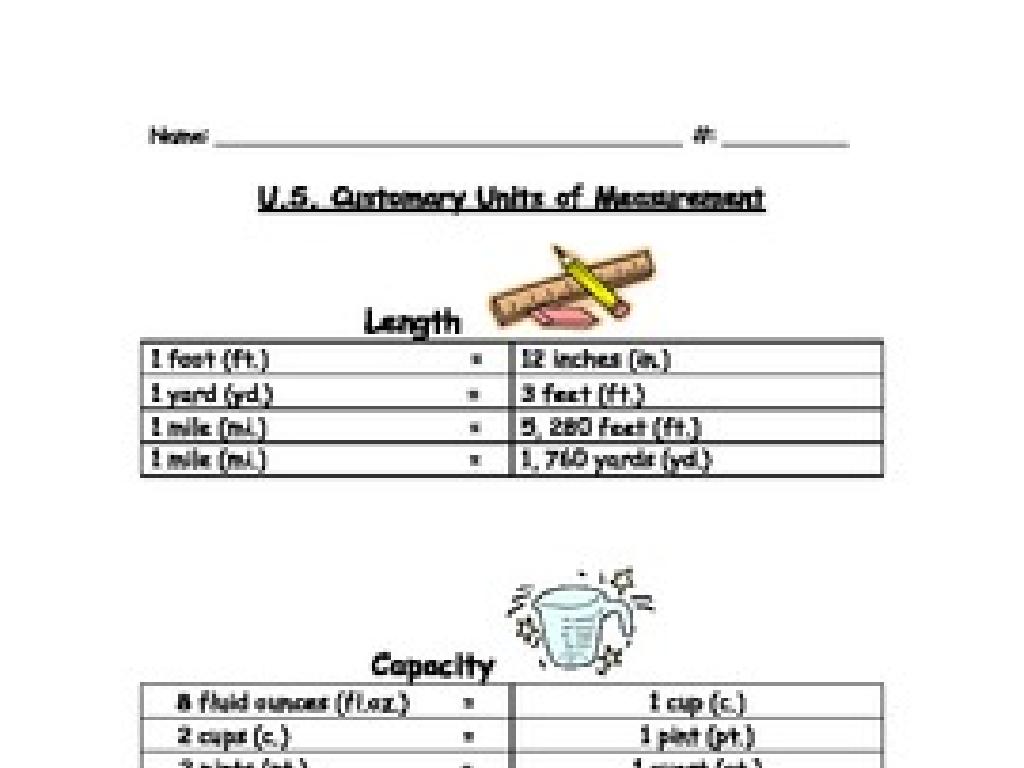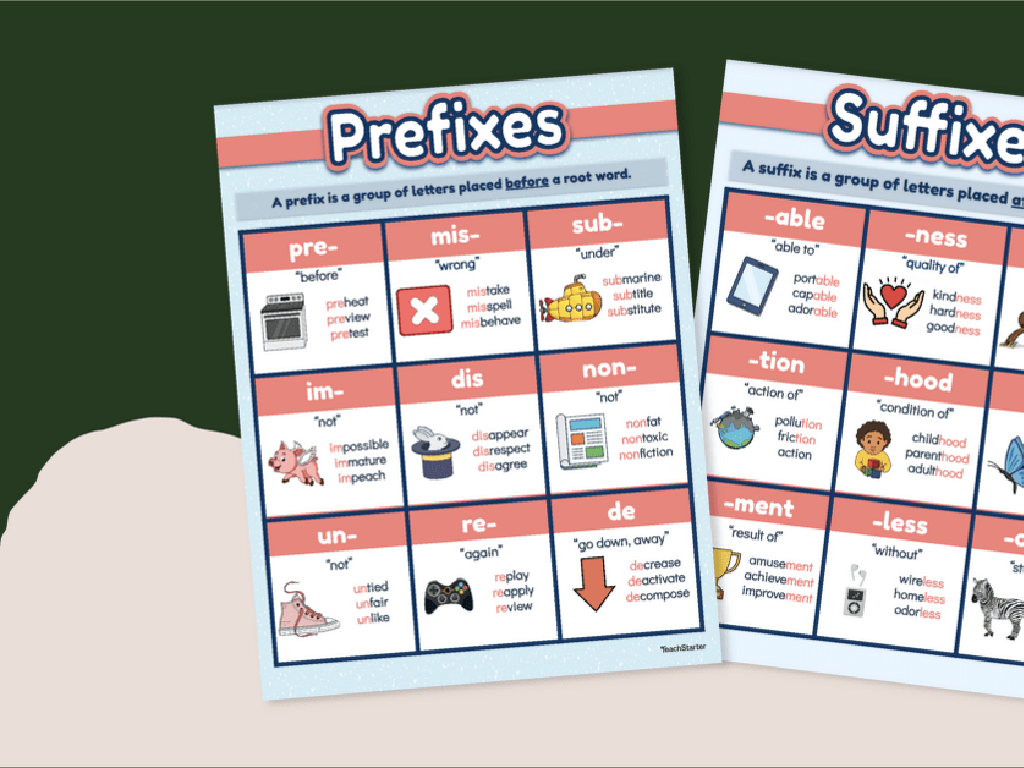Reaction Rates And Equilibrium
Subject: Science
Grade: High school
Topic: Chemistry
Please LOG IN to download the presentation. Access is available to registered users only.
View More Content
Introduction to Reaction Rates and Equilibrium
– Exploring reaction rates
– The speed at which reactants turn into products.
– Defining chemical equilibrium
– A state where reactants and products have no net change over time.
– Reaction rates in daily life
– Cooking, rusting of iron, and photosynthesis.
– Equilibrium around us
– Carbonated beverages and homeostasis in the body.
|
This slide introduces the fundamental concepts of reaction rates and equilibrium in chemistry. Reaction rates refer to the speed at which chemical reactions occur, which is crucial for understanding how quickly reactants are converted into products. Equilibrium is the state in a chemical reaction where the rate of the forward reaction equals the rate of the reverse reaction, resulting in no net change in the concentration of reactants and products over time. Real-life examples help students relate these abstract concepts to the world around them, such as the rusting of iron, which is a slow reaction, or the quick release of gas when opening a carbonated drink, demonstrating equilibrium. Discuss the importance of these concepts in biological systems and industrial processes to provide a comprehensive understanding of their applications.
Factors Affecting Reaction Rates
– Temperature’s impact on speed
– Higher temperatures generally increase the speed of reactions.
– Concentration’s role in reactions
– More reactants can lead to more frequent collisions and faster reactions.
– Surface Area’s effect on rate
– Smaller particles increase the surface area, leading to a higher reaction rate.
– Catalysts and reaction speed
– Catalysts lower the activation energy, increasing reaction speed without being consumed.
|
This slide aims to explain the various factors that can affect the rate at which chemical reactions occur. Temperature is a crucial factor; as it increases, molecules move faster, leading to more collisions and quicker reactions. Concentration plays a role as well; higher amounts of reactants can lead to more collisions per unit time. Surface area is another key factor; smaller particle sizes expose more area to reactants, facilitating more frequent interactions. Lastly, catalysts are substances that can significantly speed up reactions by lowering the activation energy required for the reaction to proceed, all without being used up in the process. Understanding these factors is essential for controlling reaction rates in industrial processes and laboratory experiments.
Exploring Equilibrium in Chemical Reactions
– Dynamic Equilibrium: balance in reactions
– At dynamic equilibrium, forward and reverse reactions occur at equal rates, but the concentrations of reactants and products remain constant.
– Le Chatelier’s Principle: predicting shifts
– Le Chatelier’s Principle helps us predict how a system at equilibrium will respond to changes in concentration, temperature, or pressure.
– Equilibrium Constants: Kc and Kp
– Kc (equilibrium constant in terms of concentration) and Kp (in terms of pressure) provide a quantitative measure of the position of equilibrium.
– Calculating Kc and Kp
– Use the equilibrium concentrations of reactants and products to calculate Kc, and partial pressures for Kp.
|
This slide introduces students to the concept of dynamic equilibrium in chemical reactions, where the rate of the forward reaction equals the rate of the reverse reaction, resulting in no net change in the concentrations of reactants and products. Le Chatelier’s Principle is crucial for predicting how an equilibrium system will shift when subjected to external changes. Understanding and calculating the equilibrium constants Kc and Kp are essential skills for students to quantify the position of equilibrium in a reaction. Provide examples of equilibrium systems and guide students through the process of calculating Kc and Kp using given data. Encourage students to consider how different factors might affect the equilibrium state and to use Le Chatelier’s Principle to predict such changes.
Calculating Reaction Rates
– Understanding Rate Laws
– Rate Laws express how rate depends on reactant concentration.
– Determining Rate Constants
– Rate Constants (k) quantify the speed of a reaction at a given temperature.
– Graphical Analysis of Rates
– Graphs show how reactants decrease and products increase over time.
– Impact on Chemical Equilibrium
– Equilibrium is reached when the rates of the forward and reverse reactions are equal.
|
This slide introduces the concept of reaction rates in chemistry and how they can be calculated. Rate Laws are mathematical expressions that show the relationship between the concentration of reactants and the rate of the reaction. Students should learn how to determine the Rate Constant (k) for a reaction, which is crucial for predicting how fast a reaction will proceed under certain conditions. Graphical analysis helps visualize changes in concentration over time, providing a clear picture of the reaction’s progress. Finally, understanding how reaction rates relate to chemical equilibrium is essential, as it is the point where the rate of the forward reaction equals the rate of the reverse reaction, resulting in no net change in concentration of reactants and products. Encourage students to practice by calculating rate constants from given data and drawing graphs to represent reaction progress.
The Haber Process: Industrial Ammonia Synthesis
– Overview of the Haber Process
– A method to synthesize ammonia industrially using nitrogen and hydrogen gases.
– Balancing rates for optimal yield
– Adjusting temperature and pressure to favor high yield while maintaining equilibrium.
– Environmental impact considerations
– Assessing the ecological footprint, including energy consumption and byproduct release.
– Economic significance of the process
– Ammonia’s role in fertilizers boosts agriculture but requires cost-effective production.
|
The Haber Process is a critical industrial reaction used to produce ammonia by combining nitrogen and hydrogen gases under high pressure and temperature. Understanding the balance between reaction rates and equilibrium is essential for optimizing yield, which has significant environmental and economic impacts. The process’s energy intensity and byproduct management are key environmental concerns, while its contribution to fertilizer production underlines its economic importance. Discuss the trade-offs involved in the process and the importance of scientific advancements in improving efficiency and sustainability.
Class Activity: Simulating Equilibrium
– Conduct a hands-on equilibrium experiment
– Observe effects of concentration changes
– How does altering concentrations affect equilibrium?
– Discuss observations in groups
– Draw conclusions from the activity
– Relate observations to Le Chatelier s Principle
|
This class activity is designed to provide students with a practical understanding of chemical equilibrium and how it can be affected by changes in concentration. Students will conduct a hands-on experiment to observe the shifting of equilibrium when different concentrations are applied. After the experiment, students will form groups to discuss their observations. This discussion should guide them to understand the dynamic nature of equilibrium and how systems respond to disturbances as described by Le Chatelier’s Principle. The teacher should prepare different scenarios for the experiment to show various shifts in equilibrium. Possible activities include changing the concentration of reactants or products and observing color changes in a solution, temperature changes, or formation of precipitates. The teacher should circulate during the group discussions to facilitate and ensure that students are making the correct conclusions based on their observations.
Conclusion: Reaction Rates and Equilibrium
– Recap key concepts
– Summarize reaction rates and equilibrium principles.
– Real-world significance
– Discuss applications in industry, biology, and environment.
– Q&A session
– Encourage curiosity
– Ask any lingering questions or seek clarifications.
|
This slide aims to consolidate the students’ understanding of the fundamental concepts of reaction rates and chemical equilibrium. Begin by summarizing the main points covered in the lesson, emphasizing the dynamic nature of equilibrium and factors affecting reaction rates. Highlight the relevance of these concepts in various real-world contexts, such as industrial synthesis, biological systems, and environmental processes. Open the floor for a Q&A session, encouraging students to ask questions or express any confusion they might have. This is an opportunity to assess comprehension and to foster a deeper interest in the subject. Encourage students to think critically about how these chemical principles appear in everyday life and the impact they have on various scientific and technological fields.





